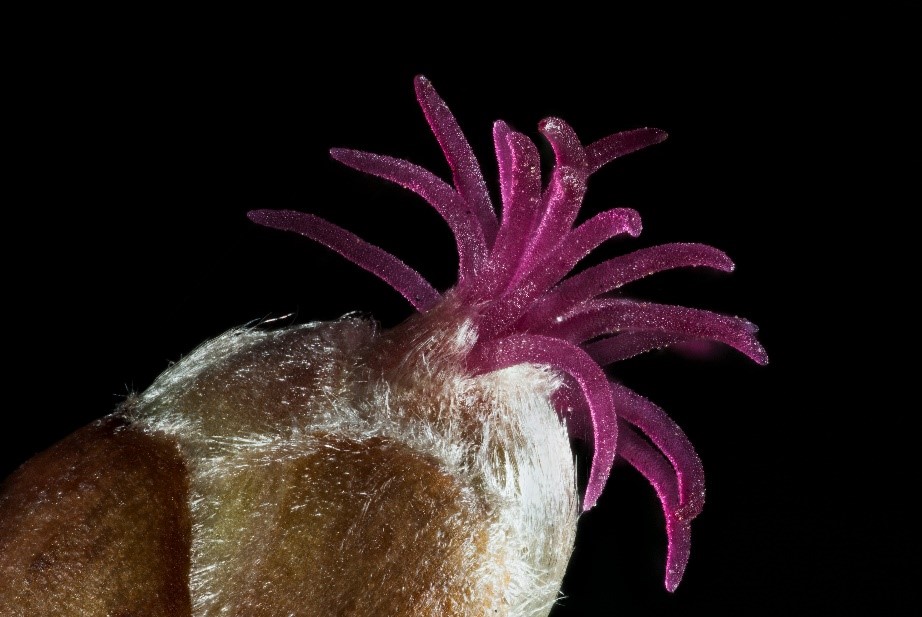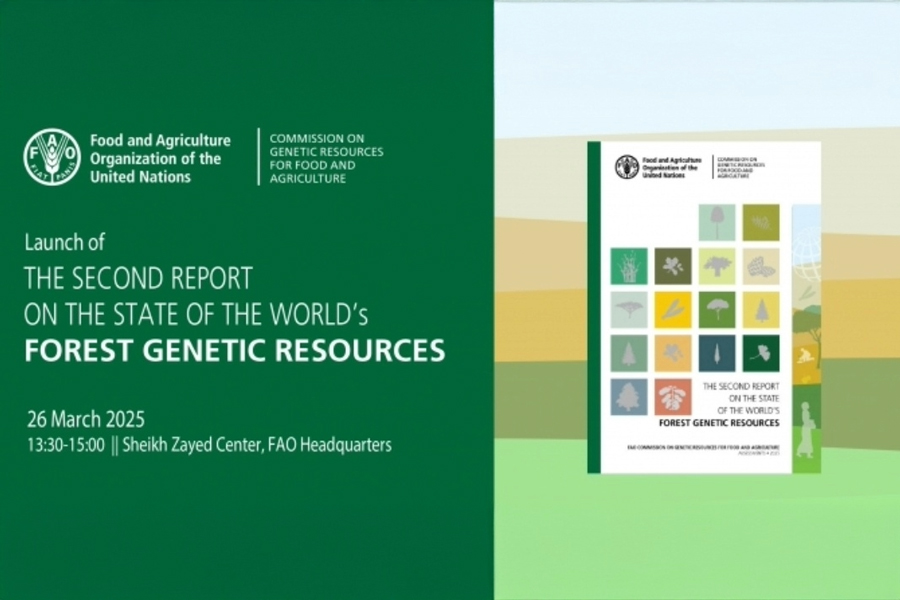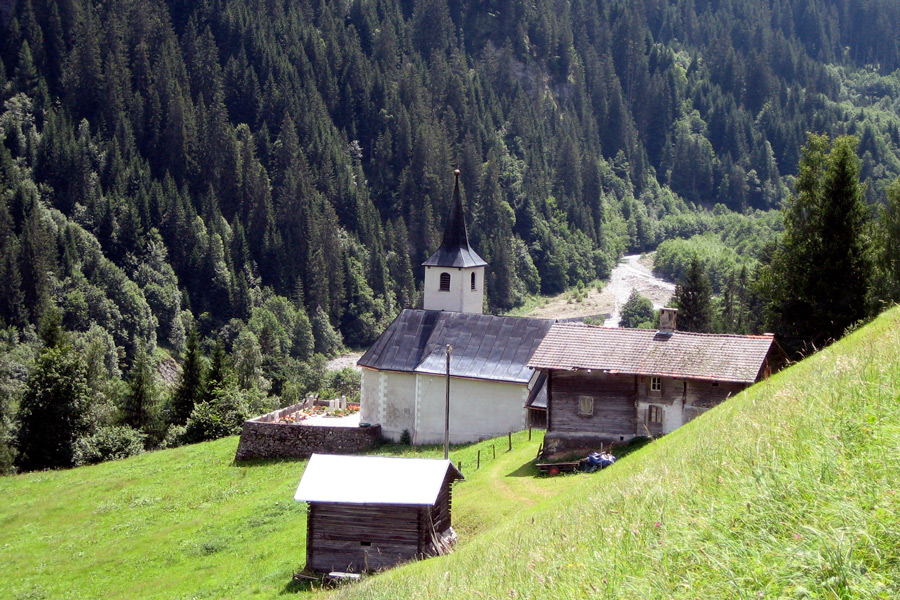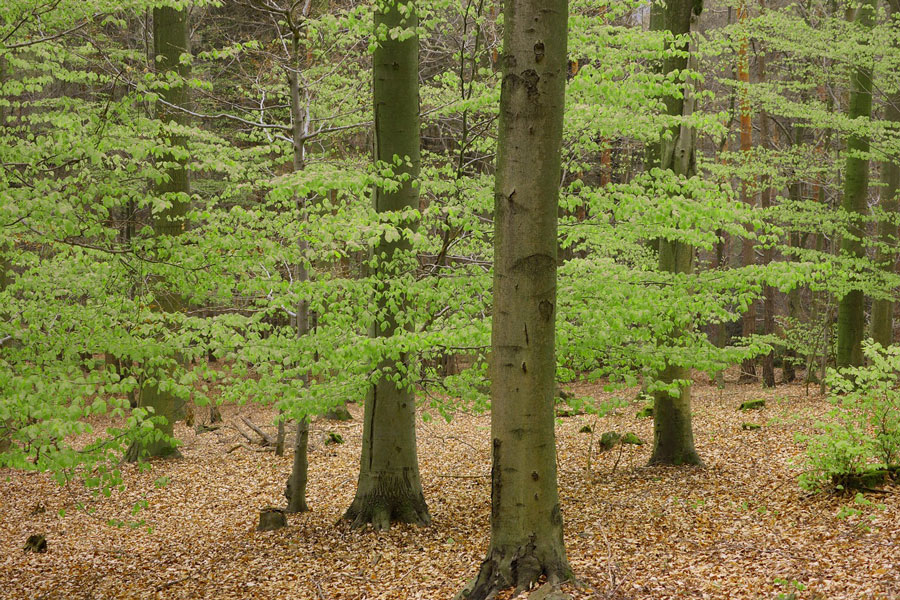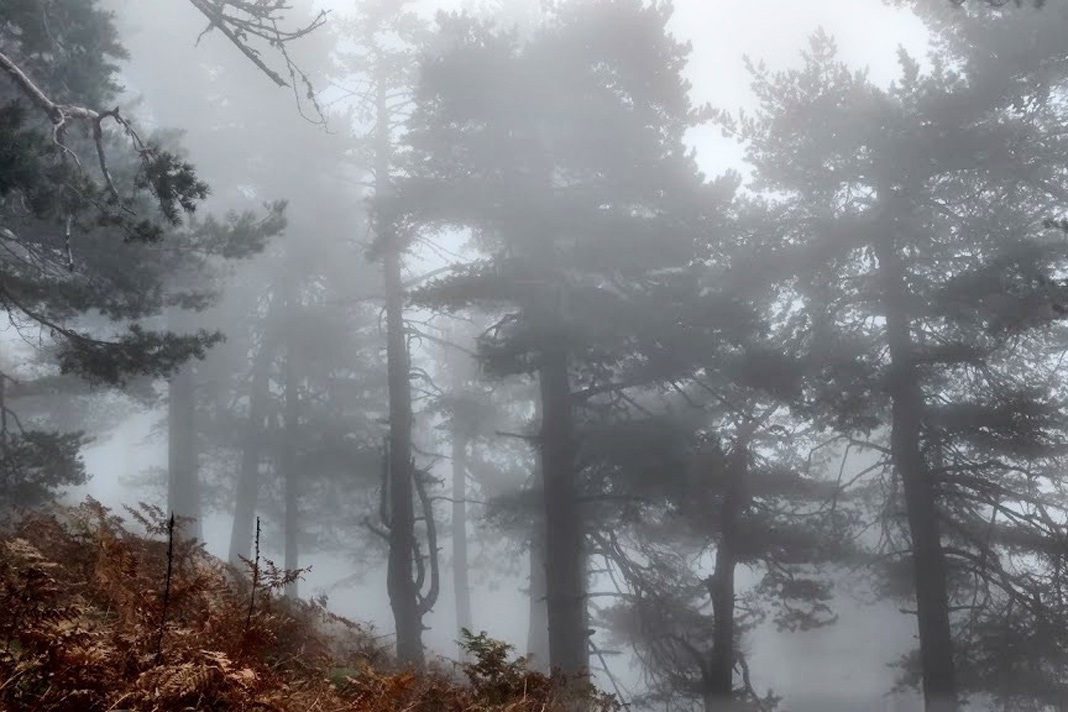Trees come to life
Some of us are already admiring blossoms and tiny fresh leaves. Others are waiting expectantly. For all, trees returning to life signals the onset of spring. But how do they do it? Kjersti Bakkebø Fjellstad, from The Norwegian Institute of Bioeconomy Research (NIBIO), explains.
In Norway, some of the first tree species to bloom in the spring are hazel, alder and goat willow, with birch and many others species soon after. These first flowering trees are particularly important for pollinating insects and biodiversity, but also for the human sensation that spring is arriving. The earliest trees capture our attention in that barren period, right after the snow melts. So what is it that controls flowering and bud burst in the spring?
Most trees and shrubs respond to shortening days in the autumn, which signal that they should make winter buds and stop growing. To wake from their winter break, the buds of dormant trees must first be exposed to days or even months of low temperatures between 0 and 8°C; frost is not really necessary. A cold period, however, is not enough to end dormancy. Extra signals — temperature, day length and humidity — herald spring and a favourable time for buds to break. That is why if you bring a birch twig indoors around the time of Christmas, nothing will happen. Now, with spring on the way, the twig responds to extra warmth in the home by unfolding its delicate new leaves.
There is a genetic element to the timing of bud burst. Individual trees of the same species will burst at slightly different times and the difference can be substantial in species such as Norway spruce, for example. There is a tension between opening early, and thus getting the benefits of a longer growing season, while at the same time risking the damage of a late frost. Trees that burst later do not risk damage, but have a shorter growing season. To avoid frost damage in the spring, breeders select for those trees that shoot later.
Every tree at its time
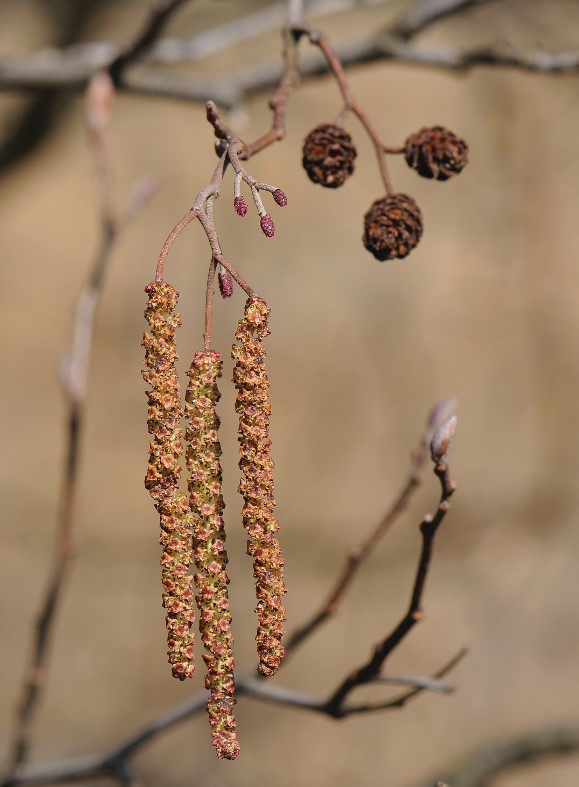
Longer days, following a period of low temperatures, signal that a new growing season can start. For those species that bloom earliest in the spring, the flower buds will begin to grow at lower temperatures than the leaf buds, and we will see the beautiful flowers on bare twigs.
Alder and hazel are examples of tree species that bloom on bare twigs in the spring. Grey alder (Alnus incana) usually bursts first, followed by the black alder (A. glutinosa) and hazel (Corylus avellana). At first glance the flowers of hazel are not as eye-catching, but if you look closely, the branches are dotted with tiny, very pretty purple female flowers. Hazel and alders are in the birch family and their flowers are called catkins. Female and male catkins are separate, but carried on the same tree. Species with male and female flowers on the same plant are known as monoecious species.
Goat willow (Salix caprea) flowers also emerge quite early and they are important for insect diversity, with good nectar for butterflies, bumblebees and bees. Willow is dioecious, meaning male and female flowers grow on separate trees. The furry catkins are often called “pussy willows” and the male flowers cover the fields and roadsides in bright yellow long before other trees have even started to think about flowers or leaves. When I see pussy willows, I know that spring is on its way.
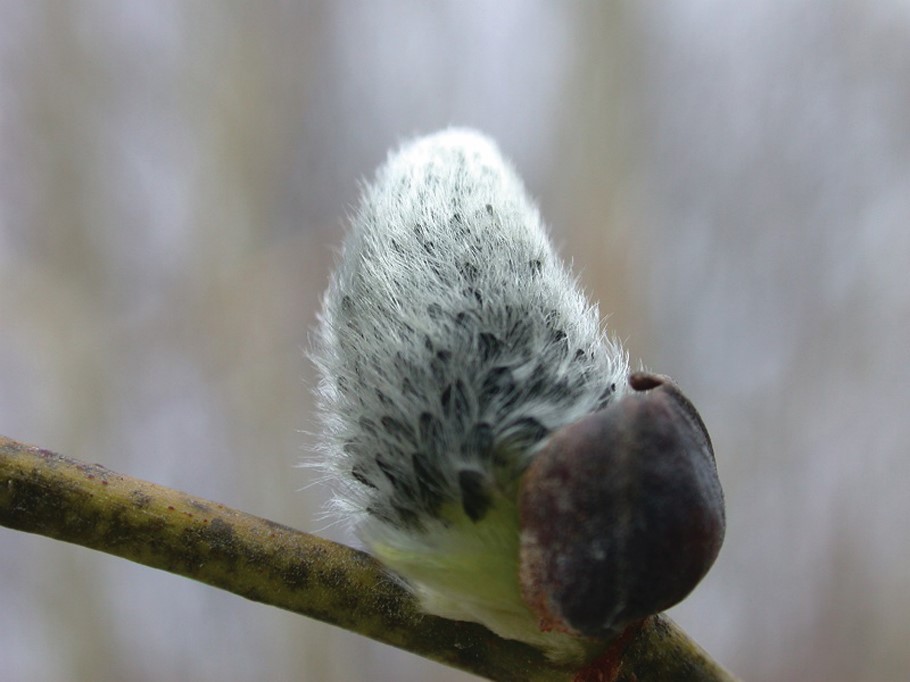
After a while, birch (Betula spp) shoots to life too. In birches, catkins and leaves usually burst at the same time. The male catkins generally hang down, and the wind can easily spread the lightweight and plentiful pollen around. Many people are allergic to birch pollen, and for them the flowering of the birch is more of an annoyance than a delight of spring.
Birch trees love light, but apart from having to compete for sunshine, they have few competitors for their habitat. We have three species of birch in Norway; downy birch (B. pubescens), silver birch (B. pendula) and dwarf birch (B. nana). The three species can cross with each other, which creates variation that sometimes makes it difficult to draw clear boundaries between the species. Birch pollen travels on the wind and the winged seeds can also travel quite long distances, which leads to the spread of new genetic variants over a wide range.

My personal favourite among the early trees is the Norway maple (Acer platanoides). The tree itself has barely started to come to life, yet the bright yellow, beautiful flowers shoot from the bare twigs, giving a glimpse of growing expectations for the new season. The flowers are small and yellowish-green and sit together in a little cluster (botanically a corymb), like the hazel well worth paying attention to. Maples, like birches, are monoecious, with separate male and female flowers on the same tree. Last year (2019) we had many warm days in April, and the Norway maple bloomed early. Usually the flowers come in May, with the leaf buds bursting a little later. This timing reflects the fact that Norway maple is a heat-loving tree that does not withstand frost well.
For all trees, the timing of bud burst is an important aspect of survival and fitness, largely under genetic control to give them a long growing season with reduced risk of frost damage. As climate changes, however, we may see changes in the timing of these events, and they may become less reliable signals of spring.
Related News
Related Links
- Black alder
- Grey alder
- Common hazel
- Goat willow
- Betula pendula
- Downy birch
- Norway maple
